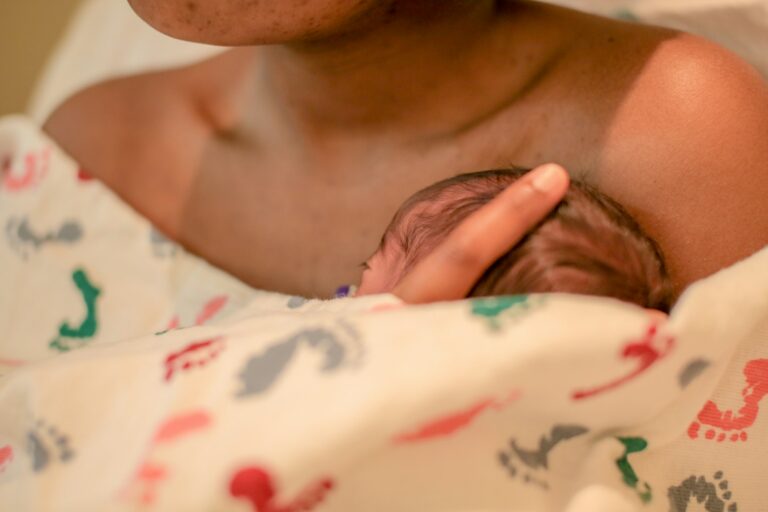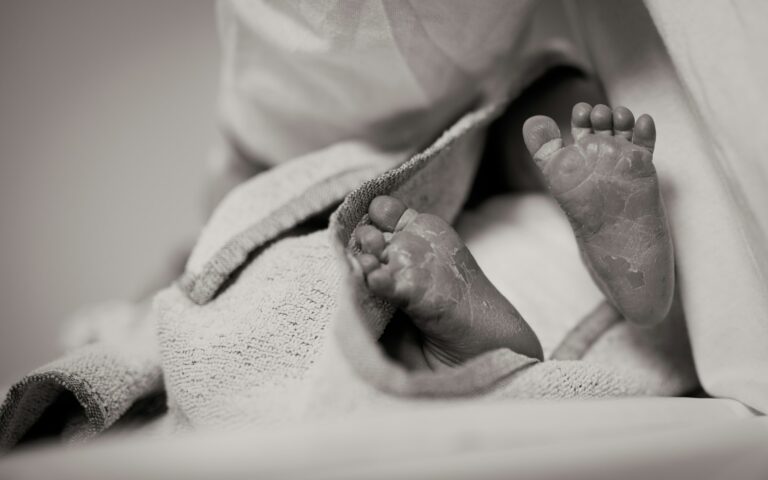The arrival of a new baby marks a profound transformation—physically, emotionally, even spiritually. Suddenly, life operates to the rhythm of a baby’s cries, unpredictable nap cycles, and an ever-shifting landscape of sensations running through your body. Many parents look down at their abdomen, examine the new contours of their hips, or simply feel “different” in their own skin. Wondering when—or if—your body will “feel like yours” again? Or why emotional tides surge unexpectedly, sometimes without warning? The physical journey after childbirth—medically known as Postpartum body changes—is as varied as it is universal, and understanding its unpredictable rhythm helps set expectations, alleviates unnecessary worry, and arms you with practical strategies. Questions about persistent pains, new tenderness, lochia, or even hair falling out by the handful? You’re in good company. From uterine contractions to emotional fluctuations, here’s a comprehensive look at what really happens after baby, and sound advice on how to ease the process.
Understanding Postpartum Body Changes
Postpartum body changes stretch far beyond the cliché of “baby weight.” The weeks following childbirth—the so-called “fourth trimester”—unfold like an intricate physiological symphony:
- The uterus, once home to a rapidly growing baby, now undergoes a swift involution.
- Digestive rhythms, once reliable, might suddenly rearrange themselves.
- Hormonal fluctuations—a tumbling of estrogen and progesterone—play havoc with mood, energy, and body composition.
- Skin, stretched and pigmented, tells visual stories—stretch marks, linea nigra, and sometimes a stubborn pouch.
- Breasts, responding to surges in prolactin and oxytocin, switch roles—shifting from pregnant fullness to producing nutrient-rich colostrum, before settling into regular milk production.
- Pelvic muscles, often weakened by delivery, affect both continence and a sense of support.
Each individual’s postpartum recovery resembles a unique mosaic—a patchwork of shared “normal” changes, overlayed with deeply personal nuances. Anticipating these postpartum body changes doesn’t erase discomfort or questions, but it does diminish unnecessary distress. And always—red flags like heavy bleeding, fever, or symptoms of postpartum depression should prompt immediate medical attention.
Uterus, Abdomen, and Digestive System: Recovery in Motion
The postpartum uterus doesn’t instantly shrink back—far from it. Directly after delivery, you might feel it sitting just below the bellybutton, a firm mass roughly the size of a grapefruit. Over the next 10 to 15 days (a bit longer after cesarean section), intense contractions—often called afterpains—help the uterus involute. These muscle cramps, sometimes surprisingly strong with each subsequent pregnancy, often resolve in under three days. Why so intense? Each contraction helps clamp blood vessels to reduce bleeding and ushers tissues toward healing.
Lochia, that distinctive postpartum vaginal discharge, offers another layer to the recovery puzzle. It transitions in color and consistency from red (lochia rubra) to pink-brown (serosa) to pale yellow (alba). If large clots or foul odors appear, it’s time to contact a healthcare professional immediately.
Abdominal muscles, stretched and sometimes separated (diastasis recti), may leave your belly looking or feeling unfamiliar. Alongside, stretch marks and the faded linea nigra compose a map of pregnancy’s impact. Wondering about the persistent bloating? Increased gut sensitivity and fluid retention play a role. Gentle abdominal massage (oils like sweet almond or argan are suitable) and graded return to physical activity (two months or more, guided by your provider) smooth the journey toward regained core strength.
Postpartum constipation is common, aggravated by hormonal changes, altered physical activity, and sometimes, fear of pain. Solutions? A fiber-rich diet, magnesium-enhanced water, and dried fruits (like figs and prunes). In rare cases, stool softeners—always with a provider’s guidance. Avoiding strain protects healing perineal tissues and reduces the risk of worsening hemorrhoids, another frequent companion.
The Perineum, Pelvic Floor, and Hemorrhoids
The perineal region (the area between the vaginal opening and the anus) endures significant stress, whether from tears, episiotomy, or simply the stretching from birth. Swelling, bruising, and soreness are par for the course, as are dissolvable stitches working quietly beneath the surface. Recovery time? Usually a few weeks, but comfort can be fleeting—especially when sitting, walking, or caring for your new baby.
Pain relief after birth isn’t taboo—ice packs, warm water washes after toilet use, pain medication safe for breastfeeding, and sitting on an inflatable ring all help. Antiseptic solutions should only be applied on medical advice, as they can upset natural vaginal flora.
Pelvic floor weakness, signaled by mild incontinence or a sensation of “heaviness,” is a direct manifestation of stretched muscles. Kegel exercises—gentle pulses of muscle contraction and relaxation—are recommended after six to eight weeks. For persistent symptoms, specialized pelvic floor physical therapy offers excellent results.
Hemorrhoids, both internal and external (dilated blood vessels in the lower rectum or anus, often due to the pressure of pregnancy and delivery), add a painful twist. Relief arrives through witch hazel compresses, gentle suppositories, and a strict no-strain bowel regime. Rarely, persistent or very painful cases prompt referral to proctology.
Veins, Circulation, and Lower Limb Changes
Lower limb swelling—a frequent visitor in late pregnancy—may linger days after birth. The reason? Both hormonal changes and mechanical compression of pelvic veins. Compression stockings, prescribed when needed, accelerate recovery, improve blood circulation, and help reduce the risk of thrombosis—a less common but serious concern. Persistent varicose veins or unilateral swelling demands an urgent review with a healthcare provider.
Breasts: From Colostrum to Mature Milk
On day three or five postpartum, breasts may feel unrecognizably engorged, creating discomfort that is both physical and emotional. The “milk coming in” period involves a dramatic increase in blood flow, lymphatic fluid, and the switch from colostrum (the first, antibody-rich milk) to mature breast milk. Engorgement subsides with frequent, effective breastfeeding—but poorly managed, risks mastitis (inflammation), blocked ducts, and ongoing pain.
Nipple soreness is common, particularly when establishing feeding. Nipple creams, air exposure, and lactation consultant support protect delicate skin and bolster confidence. Breasts may eventually return to pre-pregnancy size or remain changed—this is highly individual and reflects fatty tissue redistribution as much as milk output.
The Bladder, Continence, and Urinary Recovery
Temporary urinary incontinence—a few leaks when sneezing, coughing, or lifting—is a familiar story in the postpartum weeks, especially when the pelvic floor is recovering. Continued symptoms after the initial six to eight weeks—pelvic heaviness, leaking urine—merit professional assessment. Conversely, an inability to urinate is an emergency and must be addressed at once.
Back, Pelvis, and Musculoskeletal Issues
Back pain post-delivery—often blamed wrongly on epidurals—primarily results from altered posture while pregnant. Balance shifts, abdominal muscles loosen, and sudden weight loss (from delivering baby and fluids) leaves the musculoskeletal system struggling for equilibrium. Support belts, physiotherapy, and osteopathic adjustments all serve as useful options for persistent discomfort.
Pelvic bone or joint pain sometimes lingers for months, especially if ligaments remain overly flexible due to relaxin (a hormone that surges during pregnancy). Gradual return to physical activity and targeted strengthening, rather than rushing back to high-impact routines, is key.
Skin, Hair, and Long-Term Physical Adjustments
Beyond stretch marks, a diverse array of sensory changes play out: skin pigmentation may darken (especially on the face), then gradually fade. Hair might fall out in clumps three to six months after delivery—blame this on abrupt shifts in hormonal levels. Rest assured, regrowth is nearly universal, though the timeline is variable.
Foot and joint changes often persist longer, occasionally leaving shoe sizes permanently altered.
Emotional and Psychological Adjustments
Society’s fixation on “bouncing back” after pregnancy morphs body image into a battleground. If feelings of inadequacy or urgency to return to a former self arise, remember: every stretch mark, new curve, and emotional swell is an imprint of what your body has accomplished.
Mood swings, anxiety, and irritability—collectively labeled baby blues—touch about 80% of new mothers and generally ease within two weeks. If sadness deepens, motivation dwindles, or intrusive thoughts persist, it could signal postpartum depression—a treatable medical condition. Early recognition and support (family, peer groups, mental health professionals) remain the cornerstone of recovery.
Recovery, Self-Care, and Building Support
Checkups—scheduled visits focusing on both physical and emotional well-being—are the foundation of a healthy postpartum recovery. They provide a safe space to address questions about bleeding, pain, healing wounds, mental health, or newborn care. Urgent medical attention is warranted for heavy bleeding, clot passage, fever, foul discharge, unilateral leg swelling, sudden shortness of breath, or alarming mood changes.
Daily self-care also matters. Keep perineal wounds clean with warm or cool water, swap pads often, and use gentle cleansers in place of harsh chemicals. Pain management, constipation relief, and nipple care all play distinct roles in comfort and healing. Protein, fiber, and hydration remain dietary must-haves, with strategic rest (sleep when the baby sleeps, limit visitors, accept practical help) elevating recovery.
Physical activity returns in phases: start with pelvic floor exercises, then walking and daily movement. Delay high-impact routines until you’re physically and emotionally ready—generally after your postpartum checkup.
For questions about breastfeeding—latch issues, nipple pain, or milk supply—early intervention by a lactation consultant is invaluable. Wearing supportive bras and feeding on demand also help.
Don’t underestimate the value of community. Family, friends, parent groups—these collective supports ease the everyday load. Recovery is not a solo act.
Key Takeaways
- Postpartum body changes affect nearly every system: uterus, abdomen, breasts, pelvic floor, skin, urinary tract, bowels, and overall well-being.
- Physical recovery after childbirth includes involution of the uterus, variable weight loss or gain, temporary incontinence, stretch marks, hormonal shifts, and emotional ups and downs.
- Pelvic floor weakness, abdominal wall separation, and postpartum hair loss are common but responsive to targeted care and time.
- Self-care, patience, and gradual return to activity safeguard your health and foster healing.
- Don’t delay medical evaluation if heavy bleeding, pain, fever, urinary problems, or mental health concerns arise.
- Embrace your body’s adaptability and resilience—a “pre-pregnancy” state is rarely the goal, but strength and confidence absolutely are.
- Ready for tailored guidance? Download the Heloa app for personalized advice and free child health questionnaires—trusted resources, always at your fingertips.
Postpartum body changes tell the story of new life—messy, unpredictable, and, above all, a testament to the demands and marvels of parenthood. Take time, consult your care team when questions persist, and trust that recovery is a spectrum, not a race.
Questions Parents Ask
Can postpartum body changes affect intimacy with my partner?
It’s common to experience changes in intimacy following childbirth, both physically and emotionally. The pelvic area may still be tender or recovering, and hormonal shifts can impact libido or natural lubrication. Many parents also feel self-conscious about new body changes, which can influence desire. Take your time, communicate openly with your partner, and explore gentle intimacy at your own pace. If discomfort or anxiety about intimacy persists, a healthcare professional or counselor can offer support and reassurance. Rassurez-vous, these changes sont souvent temporaires et il existe des solutions adaptées à chaque situation.
How long does it take for hormones to regulate after childbirth?
Hormone levels begin to adjust immediately after birth, but the process can take several weeks to a few months. Many parents notice shifts in mood, energy, and even hair or skin condition during this period. Each recovery journey is unique, and it’s tout à fait normal to feel “not yourself” for a while. If challenging emotions linger or daily life feels overwhelming, n’hésitez pas à en parler avec un professionnel de santé. Seeking support is a natural and positive step towards feeling better.
Is it normal to have swollen feet and hands after giving birth?
Yes, swelling in the feet and hands is fréquent après l’accouchement. It results from hormonal changes and the body’s natural adjustment as it releases excess fluids retained during pregnancy. This swelling usually fades in the days or weeks following delivery. Staying hydrated, elevating your legs, and gentle movement can help. If swelling becomes severe, only affects one side, or is accompanied by pain or redness, it is important to consult your healthcare provider for further evaluation.
Further reading:









